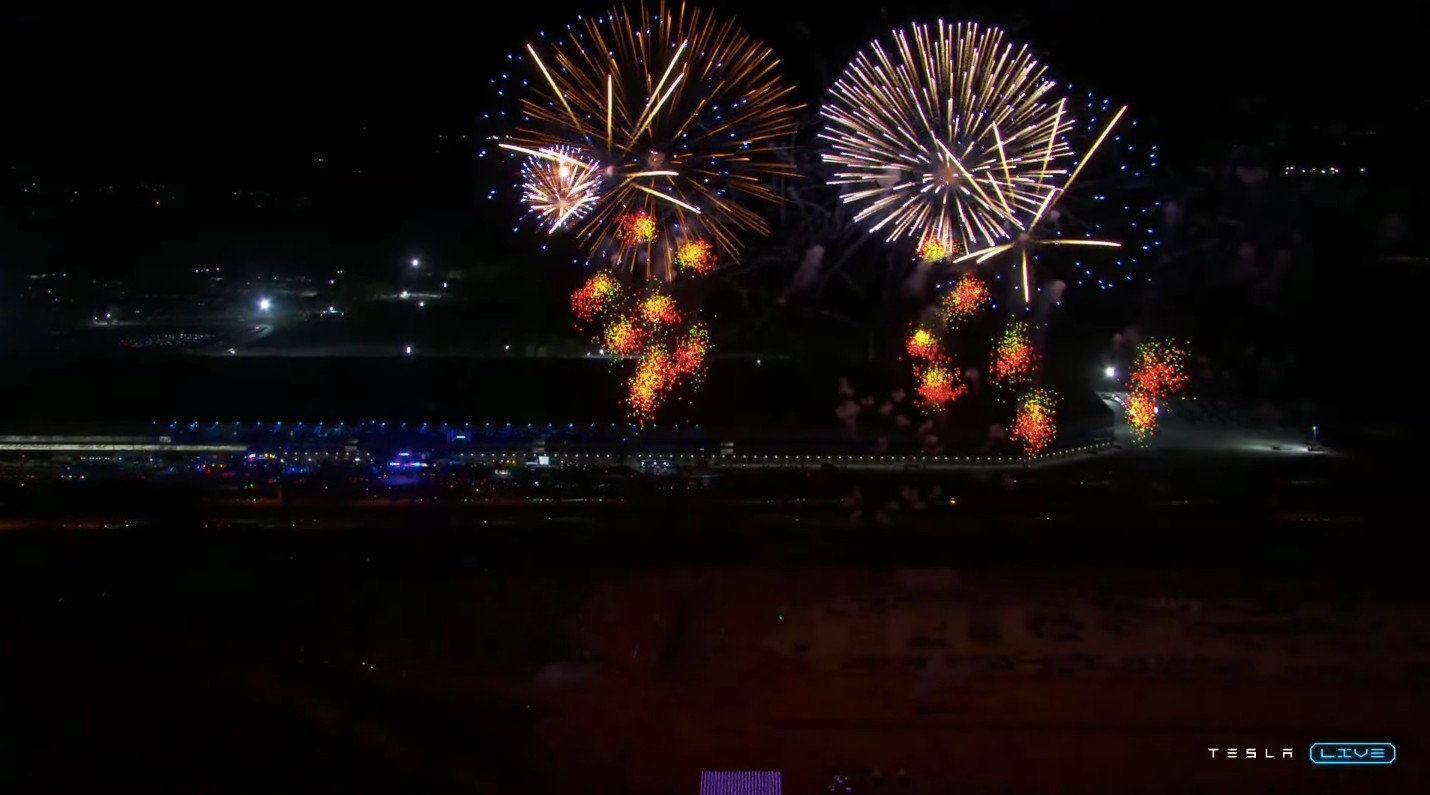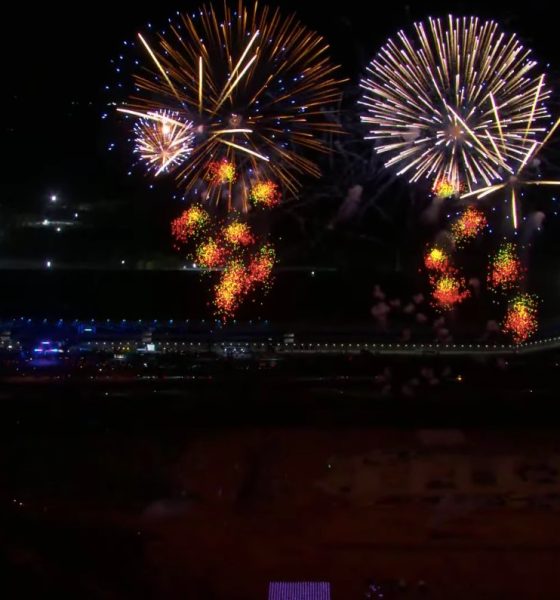Tesla has had quite a phenomenal year in 2022. As the year comes to a close and we move into 2023, it’s great to step back and take a look at Tesla’s progress. Tesla shared a thread on Twitter thanking its supporters, employees, and customers for helping to make 2022 a good year for EVs.
Although Tesla shared its long list, we are highlighting a few of those key moments for Tesla.
2022 was a huge year for EVs.
Thank you to Tesla owners, supporters & employees for helping us accelerate the world’s transition to sustainable energy! ⚡️🚘🔋☀️❤️
— Tesla (@Tesla) December 29, 2022
Tesla started the new year by moving full speed ahead after delivering almost one million vehicles in 2021. In total last year, Tesla delivered 936,172 electric vehicles.
In March, Elon Musk danced as he and Tesla handed over the first made-in-Germany vehicles produced at the newly opened Giga Berlin, which opened in the fall of 2021. At this event, Elon Musk gave a passionate speech about how Giga Berlin would be the gemstone for Europe and the world. He said:
“I’m incredibly excited to hand over the first production cars from our incredible team here at Giga Berlin Brandenburg. This is a great day for the factory, and I just like to thank everyone who helped. Thank you, thank you very much. It really made a big difference.”
“And to the community, Tesla will make sure that this is a gem — a gemstone for the area, for Germany, for Europe, and for the world.”
“Every vehicle that we make will be another step in the direction of a sustainable energy future. We will also make battery storage. So this is going to be very important for storing renewable energy — so, for solar and wind. Because it’s intermittent, it needs to be stored, but we’re extremely confident that the world will transition to a sustainable energy future with the combination of solar, plus battery storage, and electric vehicles.”
“If you have those three legs of the stool, then you can create a sustainable energy future for as long as the sun shines and the wind blows.”
“I want to be clear that sometimes people are sad about the future or they think, well, ‘will we solve sustainable energy?’ and ‘maybe the climate issue is too late’ or something like that. I really want to assure everyone that you can have hope in the future.”
“You should have hope in the future. This problem will be solved. And this factory is a major step in that direction. And so, believe in the future.”
In the following month, Tesla held its grand opening Cyber Rodeo event at Giga Texas. Event goers were invited to tour the factory and see how Tesla manufactured its made-in-Texas Model Y vehicles. I attended and spot-interviewed one of Tesla’s employees, Kyle Wozniak. Tesla displayed its Tesla Semi, Cybertruck, and the next-gen Roadster.
Kyle Wozniak say hi pic.twitter.com/0nHKl0IdMw
— Johnna (@JohnnaCrider1) April 7, 2022
In June, Tesla’s US Energy Markets Policy Lead, Arushi Sharma Frank, gave public comments to the Electric Reliability Council of Texas (ERCOT), which paved the way for Tesla owners to participate in virtual power plants (VPPs) later this year. On December 15, Tesla officially launched its Tesla Electric for Tesla as a result of the tireless efforts of Frank and her team.
Tesla opened its Megafactory in Lathrop, California, this year also. It broke ground in August, and provided a sneak peek into the Megafactory in October as it ramped up hiring. Tesla held its second AI Day in September and unveiled a working prototype of the Optimus Bot and shared a video of the bot doing work around the office. “Our goal is to make a useful humanoid robot as soon as possible,” Elon Musk said.
In December, Tesla delivered its first Semi to PepsiCo and FritoLay, and following the deliveries, FritoLay showcased one of the trucks in the Modesto Christmas parade. Pepsi announced plans to deploy 100 of the Tesla Semis it purchased in 2023, and the vehicles will deliver products to customers such as Walmart and Kroger.
Although these are not all of Tesla’s achievements for 2022, the highlights show just how much progress it’s made toward accelerating the world’s transition to sustainable energy.
Disclosure: Johnna is a $TSLA shareholder and believes in Tesla’s mission.
Your feedback is welcome. If you have any comments or concerns or see a typo, you can email me at johnna@teslarati.com. You can also reach me on Twitter at @JohnnaCrider1.
Teslarati is now on TikTok. Follow us for interactive news & more. Teslarati is now on TikTok. Follow us for interactive news & more. You can also follow Teslarati on LinkedIn, Twitter, Instagram, and Facebook.

Elon Musk
Elon Musk’s X will start using a Tesla-like software update strategy
The initiative seems designed to accelerate updates to the social media platform, while maintaining maximum transparency.

Elon Musk’s social media platform X will adopt a Tesla-esque approach to software updates for its algorithm.
The initiative seems designed to accelerate updates to the social media platform, while maintaining maximum transparency.
X’s updates to its updates
As per Musk in a post on X, the social media company will be making a new algorithm to determine what organic and advertising posts are recommended to users. These updates would then be repeated every four weeks.
“We will make the new 𝕏 algorithm, including all code used to determine what organic and advertising posts are recommended to users, open source in 7 days. This will be repeated every 4 weeks, with comprehensive developer notes, to help you understand what changed,” Musk wrote in his post.
The initiative somewhat mirrors Tesla’s over-the-air update model, where vehicle software is regularly refined and pushed to users with detailed release notes. This should allow users to better understand the details of X’s every update and foster a healthy feedback loop for the social media platform.
xAI and X
X, formerly Twitter, has been acquired by Elon Musk’s artificial intelligence startup, xAI last year. Since then, xAI has seen a rapid rise in valuation. Following the company’s the company’s upsized $20 billion Series E funding round, estimates now suggest that xAI is worth tens about $230 to $235 billion. That’s several times larger than Tesla when Elon Musk received his controversial 2018 CEO Performance Award.
As per xAI, the Series E funding round attracted a diverse group of investors, including Valor Equity Partners, Stepstone Group, Fidelity Management & Research Company, Qatar Investment Authority, MGX, and Baron Capital Group, among others. Strategic partners NVIDIA and Cisco Investments also continued support for building the world’s largest GPU clusters.
News
Tesla FSD Supervised wins MotorTrend’s Best Driver Assistance Award
The decision marks a notable reversal for the publication from prior years, with judges citing major real-world improvements that pushed Tesla’s latest FSD software ahead of every competing ADAS system.

Tesla’s Full Self-Driving (Supervised) system has been named the best driver-assistance technology on the market, earning top honors at the 2026 MotorTrend Best Tech Awards.
The decision marks a notable reversal for the publication from prior years, with judges citing major real-world improvements that pushed Tesla’s latest FSD software ahead of every competing ADAS system. And it wasn’t even close.
MotorTrend reverses course
MotorTrend awarded Tesla FSD (Supervised) its 2026 Best Tech Driver Assistance title after extensive testing of the latest v14 software. The publication acknowledged that it had previously criticized earlier versions of FSD for erratic behavior and near-miss incidents, ultimately favoring rivals such as GM’s Super Cruise in earlier evaluations.
According to MotorTrend, the newest iteration of FSD resolved many of those shortcomings. Testers said v14 showed far smoother behavior in complex urban scenarios, including unprotected left turns, traffic circles, emergency vehicles, and dense city streets. While the system still requires constant driver supervision, judges concluded that no other advanced driver-assistance system currently matches its breadth of capability.
Unlike rival systems that rely on combinations of cameras, radar, lidar, and mapped highways, Tesla’s FSD operates using a camera-only approach and is capable of driving on city streets, rural roads, and freeways. MotorTrend stated that pure utility, the ability to handle nearly all road types, ultimately separated FSD from competitors like Ford BlueCruise, GM Super Cruise, and BMW’s Highway Assistant.
High cost and high capability
MotorTrend also addressed FSD’s pricing, which remains significantly higher than rival systems. Tesla currently charges $8,000 for a one-time purchase or $99 per month for a subscription, compared with far lower upfront and subscription costs from other automakers. The publication noted that the premium is justified given FSD’s unmatched scope and continuous software evolution.
Safety remained a central focus of the evaluation. While testers reported collision-free operation over thousands of miles, they noted ongoing concerns around FSD’s configurable driving modes, including options that allow aggressive driving and speeds beyond posted limits. MotorTrend emphasized that, like all Level 2 systems, FSD still depends on a fully attentive human driver at all times.
Despite those caveats, the publication concluded that Tesla’s rapid software progress fundamentally reshaped the competitive landscape. For drivers seeking the most capable hands-on driver-assistance system available today, MotorTrend concluded Tesla FSD (Supervised) now stands alone at the top.
News
Elon Musk’s Grokipedia surges to 5.6M articles, almost 79% of English Wikipedia
The explosive growth marks a major milestone for the AI-powered online encyclopedia, which was launched by Elon Musk’s xAI just months ago.

Elon Musk’s Grokipedia has grown to an impressive 5,615,201 articles as of today, closing in on 79% of the English Wikipedia’s current total of 7,119,376 articles.
The explosive growth marks a major milestone for the AI-powered online encyclopedia, which was launched by Elon Musk’s xAI just months ago. Needless to say, it would only be a matter of time before Grokipedia exceeds English Wikipedia in sheer volume.
Grokipedia’s rapid growth
xAI’s vision for Grokipedia emphasizes neutrality, while Grok’s reasoning capabilities allow for fast drafting and fact-checking. When Elon Musk announced the initiative in late September 2025, he noted that Grokipedia would be an improvement to Wikipedia because it would be designed to avoid bias.
At the time, Musk noted that Grokipedia “is a necessary step towards the xAI goal of understanding the Universe.”
Grokipedia was launched in late October, and while xAI was careful to list it only as Version 0.1 at the time, the online encyclopedia immediately earned praise. Wikipedia co-founder Larry Sanger highlighted the project’s innovative approach, noting how it leverages AI to fill knowledge gaps and enable rapid updates. Netizens also observed how Grokipedia tends to present articles in a more objective manner compared to Wikipedia, which is edited by humans.
Elon Musk’s ambitious plans
With 5,615,201 total articles, Grokipedia has now grown to almost 79% of English Wikipedia’s article base. This is incredibly quick, though Grokipedia remains text-only for now. xAI, for its part, has now updated the online encyclopedia’s iteration to v0.2.
Elon Musk has shared bold ideas for Grokipedia, including sending a record of the entire knowledge base to space as part of xAI’s mission to preserve and expand human understanding. At some point, Musk stated that Grokipedia will be renamed to Encyclopedia Galactica, and it will be sent to the cosmos.
“When Grokipedia is good enough (long way to go), we will change the name to Encyclopedia Galactica. It will be an open source distillation of all knowledge, including audio, images and video. Join xAI to help build the sci-fi version of the Library of Alexandria!” Musk wrote, adding in a later post that “Copies will be etched in stone and sent to the Moon, Mars and beyond. This time, it will not be lost.”










